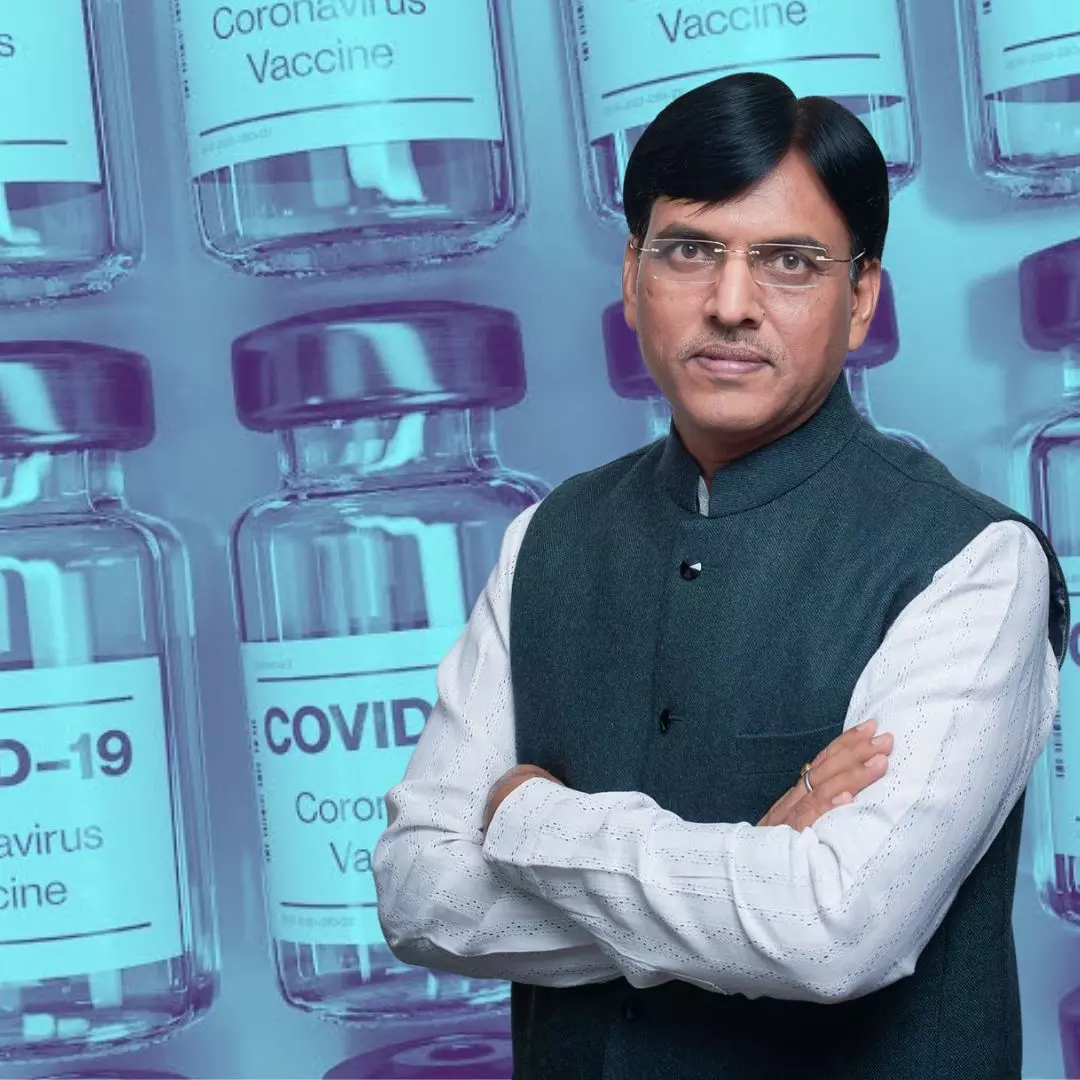Healing People & Economy: India Saved Over 3 Million Lives With Nationwide Covid Vaccination Drives
Writer: Laxmi Mohan Kumar
She is an aspiring journalist in the process of learning and unlearning many things. Always up for discussions on everything from popular culture to politics.
India, 25 Feb 2023 5:39 AM GMT
Editor : Ankita Singh |
A literature lover who likes delving deeper into a wide range of societal issues and expresses her opinions about the same. Keeps looking for best-read recommendations while enjoying her coffee and tea.
Creatives : Laxmi Mohan Kumar
She is an aspiring journalist in the process of learning and unlearning many things. Always up for discussions on everything from popular culture to politics.
While mass vaccinations were launched to protect lives, it also yielded a positive economic impact while international economies were drowning in recession. By manufacturing and administering vaccines, the country reduced the healthcare system's burden and prevented a loss of USD 18.3 billion.
A Stanford University report titled 'Healing the Economy: Estimating the Economic Impact on India's vaccination and related issues,' released on February 24, was all praises for India's widespread vaccination campaign. The report claimed that India was able to save more than three million lives through their nationwide COVID-19 vaccination campaign.
The campaign is also believed to have yielded a positive economic impact by preventing a loss of around $18.3 billion. Details from the report were discussed during a virtual dialog organised by the Institute for Competitiveness and Stanford University and attended by Union Health Minister Mansukh Mandaviya.
COVID-Appropriate Response
Talking during the virtual session, Mandaviya stated that much before the pandemic was declared a public health emergency by the World Health Organization (WHO), the country had put certain processes and structures in place for pandemic management. He hailed the decision of early lockdown adopted by the ruling government and tagged it as a significant turning point in effective pandemic management.
According to Mandaviya, it also enabled the government to leverage community response through its multi-pronged strategy - Test, Track, Treat, Vaccination, Adherence to implementing Covid Appropriate Behaviour (CAB), and delivering rapid institutional response to the public health emergency, reported The Print.
The government had mostly shifted its focus on augmenting health infrastructure in a manner that could handle the large-scale impact of the pandemic. Covid-related beds, drugs, logistics, medical oxygen, and much more were brought into the nation. Simultaneously, human resources were upskilled through Centres of Excellences and digital solutions such as eSanjeevani Telemedicine service, and Aarogya Setu, among others.
Building momentum through this robust response, Mandaviya said that their drives focused on offering equitable coverage for all. As a result, India launched the world's biggest vaccination drive with a coverage of 97 per cent first dosage and 90 per cent second dosage. A total of 2.2 billion dosages were administered to eligible beneficiaries free of cost by taking the message to crowds through campaigns, digital tools such as 'Har Ghar Dastak,' and mobile vaccination teams. The Stanford University report remarks these measures at the ground level, from contact tracing to mass testing, that helped contain the virus on both the state and national levels.
Economic Relief Along With Healthcare
While the prominent focus of the vaccination campaign was to safeguard lives, it also helped yield a positive economic impact while many international economies were drowning in debt and recession. The study emphasised on India's strategy with three cornerstones - containment, relief package, and vaccine administration. These three measures are said to have been critical in bringing down the curve and ensuring economic activity was not threatened by the pandemic affecting livelihoods.
The report elaborated that the benefits of vaccination exceeded its cost and that vaccination is considered a macroeconomic stabilising indicator rather than just a health intervention. So not only did the Indian economy prevent a loss of $18.3 billion, but it also garnered a net benefit of $15.42 billion after taking into consideration the cost of the vaccination campaign. Developing the COVAXIN and Covishield vaccines on a large scale helped the country combat the virus and decreased the burden on the healthcare system.
Additionally, Mandaviya stated that the government ensured to extend relief packages for the welfare needs of vulnerable groups, the old-age population, farmers, micro, small and medium enterprises (MSMEs), and women entrepreneurs, among others, and ensured necessary support for their livelihoods. According to a report, with the help of welfare schemes launched to support the MSME sector, an economic impact of over $100 billion was created in the nation.
Also Read: Centre Dismisses COVID-19 Vaccines' Multiple Side Effects Reports, Calles It 'Erroneous Information'
 All section
All section















